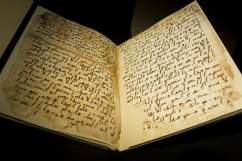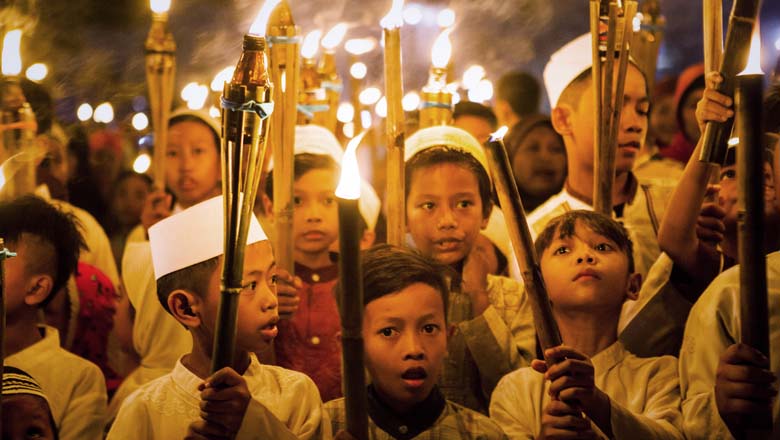
Children carry torches during a procession to celebrate the beginning of the holy month of Ramadan on June 27, 2014 in Jakarta, Indonesia. (Oscar Siagian/Getty Images)
Today begins the month long celebration of the Islamic holy time of Ramadan. Observant Muslims everywhere will be celebrating the revelation of the Quran unto the Prophet Mohammed with fasting and prayer.
This year, Ramadan begins at sundown on Friday, May 26 and ends at sundown on Saturday, June 24, with Eid al-Fitr, or the breaking of the Ramadan fast. These dates vary culturally. Last year, Ramadan started on Sunday, June 5 and ended on Tuesday, July 5.
This year Ramadan falls between May 26 and June 24. During this time, observant Muslims will fast during daylight hours. Fasting (sawm in Arabic) is another one of the Five Pillars of Islam. The times of fasting with sunrise and sunset vary depending on a Muslim’s location. According to the Fiqh Council of North America, the first full day of Ramadan is on Saturday, May 27 with the Tarawih prayers on Friday night. The Tarawih prayers are extra prayers performed by Sunni Muslims at night in the Islamic month of Ramadan.
Learn more about the history and origins of Ramadan here:
1. It Incorporates Pre-Islamic Traditions

A picture taken early on July 16, 2015 from the Abraj al-Bait Towers, also known as the Mecca Royal Hotel Clock Tower, shows Muslim worshipers praying at the Grand Mosque in the Muslim holy city of Mecca, a day before the end of the fasting month of Ramadan. The Grand Mosque, which contains Islam’s holiest site the Kaaba, can now hold 1.85 million people. (/AFP/Getty Images)
Prior to Mohammed’s revelation, ancient cultures in Arabia participated in similar rituals during the time that would become Ramadan. This included Mohammed’s tribe of Quraysh, who inhabited Mecca. According to Sahih al-Bukhari Hadith 3831, “‘Ashura’ (i.e. the tenth of Muharram) was a day on which the tribe of Quraish used to fast in the pre-Islamic period of ignorance. The Prophet (ﷺ) also used to fast on this day. So when he migrated to Medina, he fasted on it and ordered (the Muslims) to fast on it… the fasting of Ramadan was enjoined.”
Muharram is the first month of the Islamic calendar. Ashura commemorates the death of Husayn ibn Ali, the grandson of Mohammed.
Other Islamic traditions can also be traced to ancient Arabian and African peoples. Sabaeans, an ancient people that inhabited the Arabian peninsula and Africa in what is now Saudi Arabia, Yemen, and Eritrea, are mentioned in the both the Bible and the Quran.
Muslim writer Muhammad Shukri al-Alusi compares the Sabaeans religious practices to Islam in his Bulugh al-‘Arab fi Ahwal al-‘Arab, writing:
The Arabs during the pre-Islamic period used to practice certain things that were included in the Islamic Sharia. They, for example, did not marry both a mother and her daughter. They considered marrying two sisters simultaneously to be a most heinous crime. They also censured anyone who married his stepmother, and called him dhaizan. They made the major [hajj] and the minor [umra] pilgrimage to the Ka’ba, performed the circumambulation around the Ka’ba [tawaf], ran seven times between Mounts Safa and Marwa [sa’y], threw rocks and washed themselves after intercourse. They also gargled, sniffed water up into their noses, clipped their fingernails, plucked their hair from their armpits, shaved their pubic hair and performed the rite of circumcision. Likewise, they cut off the right hand of a thief.
2. The Start Date of Ramadan Changes Every Year
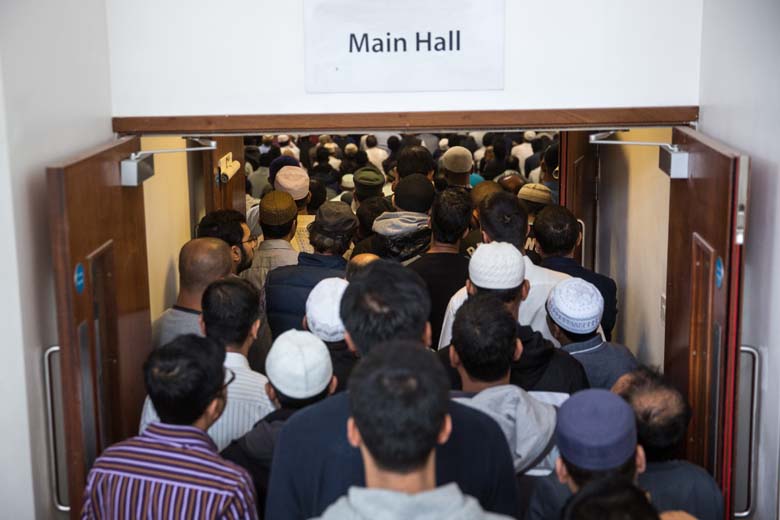
Men queue to enter the main prayer hall of the East London Mosque for the first Friday prayers of the Islamic holy month of Ramadan on June 19, 2015 in London, England. (Rob Stothard/Getty Images)
The dates of Islamic holidays changes every year because the Islamic calendar is a lunar calendar. There’s not a set amount of days in the lunar calendar. The lunar calendar reflects the cycles of the moon, and when it is compared to or tried to fit into a 12-cycle solar calendar (that most of the Western world uses), there are slightly more than twelve lunations (or moon phases) in a solar year.
When the moon is orbiting the earth, the earth is also orbiting the sun. After the earth completes one orbit (a month) the moon must still move a little further to achieve the same angular distance. This time period is called “the synodic month” and it means “having a synod” or “a meeting,” meaning a meeting between the sun and the moon.
It takes the moon about 2 days longer for it to complete its full orbit than the earth with the sun. Depending upon which orbit you follow for a calendar is what kind of calendar you have: a solar calendar or a lunar calendar. Most Asian countries traditionally used some sort of a lunar calendar, including Mongolia, Korea, Japan, and Vietnam. The ancient Hebrew calendar also follows the lunar cycles and is why Passover and other Jewish holidays fall on different dates every year. The observation of a new day beginning with the moon in Islam is also reflected in the Hebrew calendar.
Ramadan is the name of the ninth month of the Islamic calendar. This year, Muslims are celebrating their 1438 calendar year.
This year Ramadan falls between May 26 and June 24. During this time, observant Muslims will fast during daylight hours. Fasting (sawm in Arabic) is another one of the Five Pillars of Islam. The times of fasting with sunrise and sunset vary depending on a Muslim’s location. According to the Fiqh Council of North America, the first full day of Ramadan is on Saturday, May 27 with the Tarawih prayers on Friday night. The Tarawih prayers are extra prayers performed by Sunni Muslims at night in the Islamic month of Ramadan.
To find the times of sunrise (sehr) and sunset (iftar) for each day of Ramadan 2017, simply enter your location or zip code at salah.com and note the times of sunrise and maghrib (the daily prayer that happens at sunset.)
3. Ramadan Is Described in the Quran
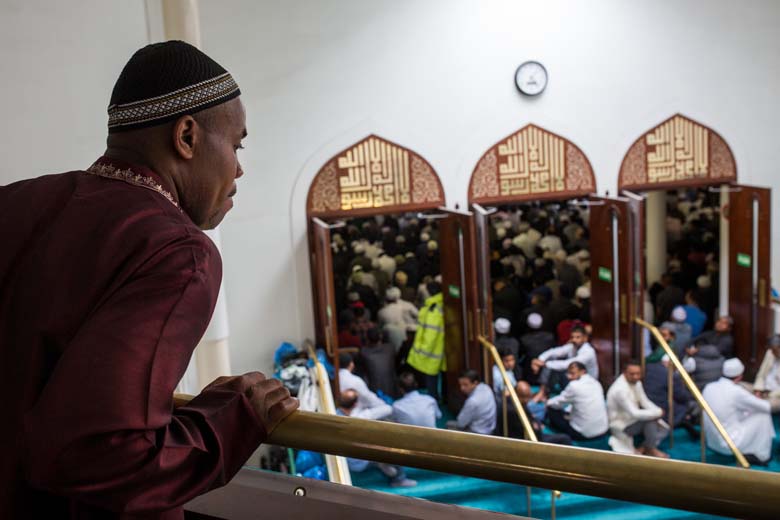
A man looks over a balcony inside the East London Mosque as people arrive to attend the first Friday prayers of the Islamic holy month of Ramadan on June 19, 2015 in London, England. (Rob Stothard/Getty Images)
The Quranic verse describing the observation of Ramadan is chapter 2, verse 185. It reads:
The month of Ramadhan [is that] in which was revealed the Qur’an, a guidance for the people and clear proofs of guidance and criterion. So whoever sights [the new moon of] the month, let him fast it; and whoever is ill or on a journey – then an equal number of other days. Allah intends for you ease and does not intend for you hardship and [wants] for you to complete the period and to glorify Allah for that [to] which He has guided you; and perhaps you will be grateful.
Ramadan is the month that Islamic tradition holds that the Quran was first revealed to Mohammed the angel of Gabriel. According to the book Loud Thoughts on Religion by Rafig Y. Aliyev, Muslims believe all earlier Abrahamic holy books were revealed during the month of Ramadan. These include the tablets of Abraham, the Torah, the Psalms, and the Gospel of Jesus.
4. Fasting Is Meant for Only Healthy People
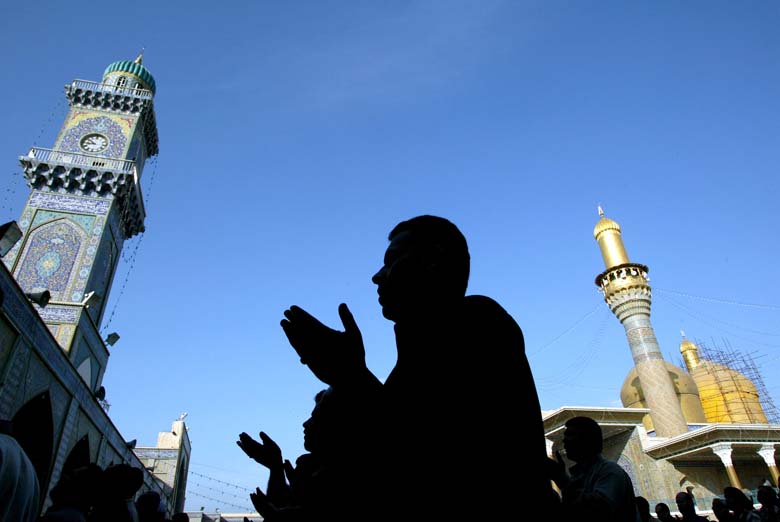
Iraqi Shiite men perform the Eid al-Fitr prayers in the Kadhmiya Shrine November 14, 2004 in Baghdad, Iraq. The Kadimya Shrine is the holiest Shiite shrine in Baghdad. (Ghaith Abdul-Ahad/Getty Images)
As stated earlier, fasting is a major tenet of Ramadan. However, it is not meant for everyone. According to an article bny Nour El-Zibdeh, RD on Today’s Dietician:
Exemptions to fasting are travel, menstruation, illness, older age, pregnancy, and breast-feeding. However, many Muslims with medical conditions insist on fasting to satisfy their spiritual needs, and healthcare professionals must work with their patients to reach common ground. Professionals should closely monitor individuals who decide to persist with fasting.
Fasting can also be harmful to those with diabetes, heart disease, hypertension, renal disease, and peptic ulcers.
5. Islam Is the Second Largest Religion in the World
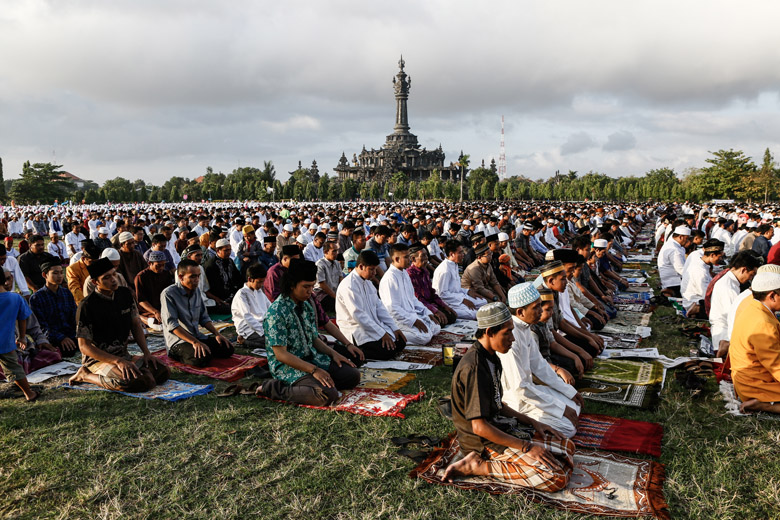
Muslims pray during mass to celebrate Eid-ul Fitr on July 17, 2015 in Denpasar, Bali, Indonesia. The two-day holiday, Eid ul-Fitr, marks the end of Ramadan, the Islamic month of fasting and begins after the sighting of a new crescent moon. (Putu Sayoga/Getty Images)
Ramadan ends at sundown on Saturday, June 24, with Eid al-Fitr, or the breaking of the Ramadan fast. Eid al-Fitr is the first day of the new month of Shawwal. Usual celebrations include family get-togethers, feasting, using perfume, wearing new clothes, and gift-giving.
More than 1.6 Muslims will be celebrating Ramadan this year. Islam is the second most popular religion in the world after Christianity. But according to the Pew Research Center, that is going to change soon. They write:
The world’s Muslim population is expected to increase by about 35% in the next 20 years, rising from 1.6 billion in 2010 to 2.2 billion by 2030… Globally, the Muslim population is forecast to grow at about twice the rate of the non-Muslim population over the next two decades – an average annual growth rate of 1.5% for Muslims, compared with 0.7% for non-Muslims. If current trends continue, Muslims will make up 26.4% of the world’s total projected population of 8.3 billion in 2030, up from 23.4% of the estimated 2010 world population of 6.9 billion.
